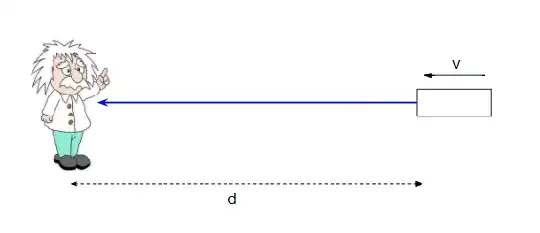Consider this experiment:

We have some laser with a power $P$, so if we run it for a time $t$ it emits an energy $E = Pt$.
Now suppose the laser is moving towards us at a speed $v$, and it starts a distance $d$ away. That means the time it takes to reach us is:
$$ t = \frac{d}{v} $$
So the energy it emits in that time is:
$$ E = P\frac{d}{v} $$
But at the beginning of the experiment there is already light in transit between the laser and us. The time the laser light takes to cross the initial gap $d$ is:
$$ t' = \frac{d}{c} $$
so the energy in transit is:
$$ E' = P\frac{d}{c} $$
That means the total energy that we receive in the time the laser takes to reach us is not just $E$ but:
$$ E_\text{total} = E + E' = Pd\left(\frac{1}{v} + \frac{1}{c}\right) $$
That's why we heat up faster when the laser is moving towards us.
Let's take this a step farther. The ratio of the energy we receive when the laser is moving to the energy we receive when it's stationary is:
$$\begin{align}
\frac{E_\text{total}}{E} &= \frac{1/v + 1/c}{1/v} \\
&= 1 + \frac{v}{c}
\end{align}$$
So using $E=h\nu$ we get:
$$ \frac{\nu'}{\nu} = 1 = \frac{v}{c} $$
and that is just the equation for the (non-relativistic) blue shift.
